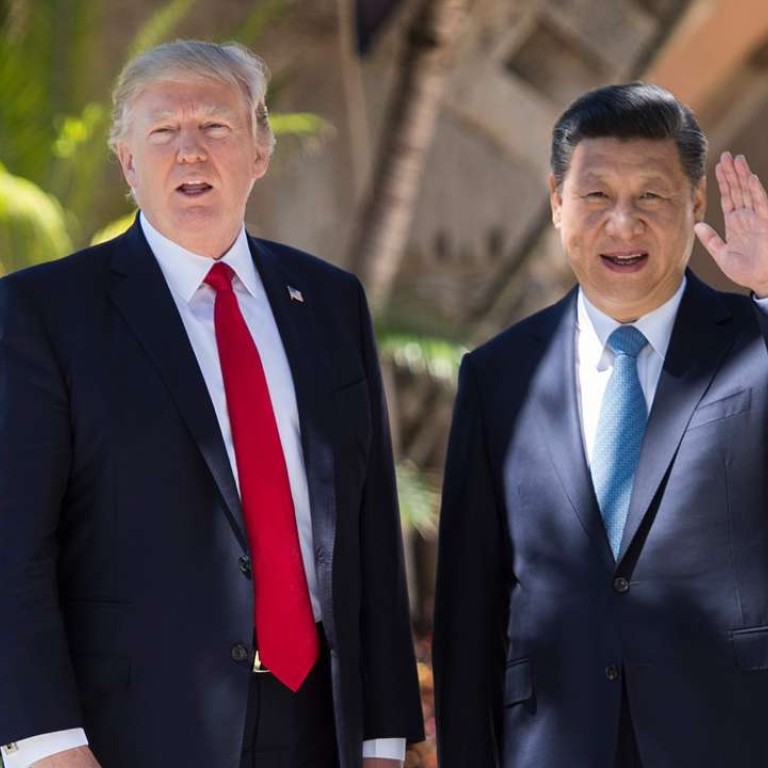
Xi-Trump summit ‘beats expectations’ but North Korea still a big divide
Presidents’ meeting has reversed potential collision path with Washington and strengthened Xi Jinping’s power at home and abroad, analysts say
The leaders of China and the United States wrapped up their much-anticipated summit with both saying the talks put Sino-US ties on a good track – despite the bumpy diplomatic ride since US President Donald Trump’s election.
The meeting on Friday yielded a bold commitment to address trade disputes and elevate their discussions, but a chasm remains over North Korea.
The outcomes are symbolic but better than anticipated – Trump dropped his anti-China rhetoric, enabling President Xi Jinping to project himself as a capable manager of complex Sino-US ties.
US officials said the two countries would develop a 100-day programme to tackle trade conflicts, particularly trade imbalances. And a new consultation mechanism headed by the two leaders would be set up to reduce mistrust on a range of issues.
Paul Haenle, director of the Beijing-based Carnegie-Tsinghua Centre, said the summit signalled Trump’s willingness to “back away from that zero-sum confrontation approach to China”.
It also showed that “despite the uncertainty that the Trump election brought to the US and the world, Xi could manage it and could put the relationship in a place that would be beneficial to China, or at least not damage China’s interests”, Haenle said.
Alexander Gabuev, from the Carnegie Moscow Centre, said the Trump team was understaffed and ill-prepared for serious discussions, so Xi made building a personal bond with Trump his priority.
Michael Green, a former Asia director at the US National Security Council, said the summit stabilised Sino-US ties but was unlikely to be historic in terms of agreements.

“This is a transitional meeting – one in which the two leaders hopefully develop some trust, lay out clearly their bottom lines, exchange views on domestic and other priorities, and set the stage for a series of meetings that stabilise US-China relations at a time when there will inevitably be more significant US pressure on China after eight years of fairly soft US policy under ... Obama,” Green said.
But deep divisions over North Korea were exposed by US Secretary of State Rex Tillerson, who said the US was prepared to act alone against Pyongyang.
Trump also did not affirm the one-China policy regarding Taiwan or echo Xi’s call for a “new type of great power relations”.
Huang Jing, from the National University of Singapore, said the summit offered some symbolic gains, but failed to produce substantial results on North Korea and the trade imbalance.
Steve Tsang, director of the SOAS China Institute in London, said the US bombing of Syria distracted the Trump team and the media. “It enabled Xi to avoid making concessions on specifics in order to ensure the summit was a success,” he said.
But Huang cautioned against rosy expectations. “Given Trump’s lack of predictability and consistency, he may soon expose his true colours by bad-mouthing Xi and China on Twitter,” he said.



